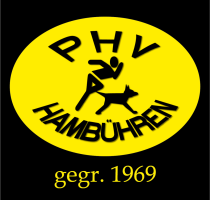It’s easy for everyone — including you — to get in a tunnel and focus on their own lists of tasks. Make sure everyone steps back each day or week to take a look at the larger picture. Use a collaboration tool like Teamwork Spaces to organize and store your documentation. You’ll be able to access all of your important documents in one location so your team won’t waste time searching for important materials.
The forming stage involves a period of orientation and getting acquainted. Uncertainty is high during this stage, and people are looking for leadership and authority. A member who asserts authority or is knowledgeable may be looked to take control.
Help your team reach their goals with strong leadership
A sense of community is established and the group remains focused on the group’s purpose and goal. Leadership is shared, and members are willing to adapt to the needs of the group. Information flows seamlessly and is uninhibited due to the sense of security members feel in the norming stage. Tuckman’s final stage of group development, adjourning, what are the four stages of group development was not originally part of his development model. During this closure or mourning phase, the group dissolves or disbands following the successful (or sometimes unsuccessful) completion of their main objective. Adjourning is used to wrap up the activities of the group and provide team members with a sense of closure or fulfillment.

However, something’s not quite right, and everyone can sense it — unexpectedly, tension builds as the final stage looms large. Sure, their opinions still clash from time to time, but they appreciate https://www.globalcloudteam.com/ each other too much to let small disagreements get in the way. Her ideas are sometimes different from Stella’s — to everyone’s delight, as this only helps when the writers reach a creative dead end.
Norming Stage
Frequent 1–1s allow managers to help their team members cope with issues and find a place in the team. After all, their ability to overcome obstacles and achieve their goals is a reflection of a management job well done. As you learn about their progress, you ask them questions about their processes and notice how they collaboratively provide constructive answers.
- Alternatively, some team members may find focussing on the task at hand is an effective response to their sadness or sense of loss.
- As you communicate with them you notice how confidently they articulate their ideas.
- By starting with a free trial, you have the freedom to learn as much as possible about the product before committing to it.
- They may feel sadness or a sense of loss about the changes coming to their team relationships.
- Bear in mind that, in some cases, you might need to reform and relaunch a long-standing team to reap the benefits of all four Tuckman stages.
- For example, Stella allows the rest of the team to suggest topics and angles for new articles more often.
Accomplishments in team process or progress are measured and celebrated. As the team begins to move towards its goals, members discover that the team can’t live up to all of their early excitement and expectations. Their focus may shift from the tasks at hand to feelings of frustration or anger with the team’s progress or process. Members may express concerns about being unable to meet the team’s goals. During the Storming stage, members are trying to see how the team will respond to differences and how it will handle conflict. The principal work for the team during the Forming stage is to create a team with clear structure, goals, direction and roles so that members begin to build trust.
Stage #2 — The Storming Stage
It’s not uncommon for people to think or be told that they have a specific set of skills that allow them to be an above-average leader or an above-average team player. These skills are usually developed in early childhood and refined through high school. A team cannot be expected to perform well right from the time it is formed. It takes time, patience, requires support, efforts and members often go through recognizable stages as they change from being a collection of strangers to a united group with common goals. Having put the needs of the group ahead of personal needs, the team begins to focus on a shared goal and find ways to solve any problems that come up.
Display these on each wall of the workshop space (before or during the workshop). The organisational environment the new team exists in is also unfamiliar to its members. The managers must introduce the team to its stakeholders and explain its dependencies and its place in the organisation.
Tips to create group norms for high-performance teams
It can lead to members of the team not appreciating the perspective of others. The forming → storming → norming → performing model of group development was first proposed by psychological researcher Bruce Tuckman in 1965. How did you know what behaviors were acceptable or what level of performance was required? Teams usually develop norms that guide the activities of team members.

Team members may not like the work style of their new colleagues, challenge the emerging team norms and resist control. Managers must ensure that the team norms are discussed, accepted, and followed by each team member. The initial stage is usually marked by a mixture of attitudes and feelings. Some members will be excited and optimistic about joining, while others will be anxious or perhaps skeptical about their roles. Meetings and other interactions will generally involve cautious attempts to get acquainted and discussions of big-picture concepts, as members determine norms and, in some cases, form cliques.
More articles by this author
Creating a team charter is a great tool to help your team, as is conducting different kinds of „get to know you“ activities. The concept of teamwork is generally understood throughout organizations of all purpose and size. However, how team members think about teamwork can vary drastically and depends on their educational understanding of the function of teams. As you are aware, there are many best practices, resources and methodologies organizations use to improve how their teams work together more efficiently and effectively. Without a cohesive, organization-wide understanding of teamwork, individuals within an organization won’t be able to fully benefit from working as a team.

It’s part of an attempt to draw thousands of new readers to the company’s website. Yet, the position of this unofficial leader may also be occupied by the strongest authority figure in the team. They are also overly positive about the project because it’s new — and new is always exciting.
Behaviors that Promote and Hinder Teams Work
They simplify the sequence and group the forming-storming-norming stages together as the „transforming“ phase, which they equate with the initial performance level. This is then followed by a „performing“ phase that leads to a new performance level which they call the „reforming“ phase. Team members may feel a variety of concerns about the team’s impending dissolution.
